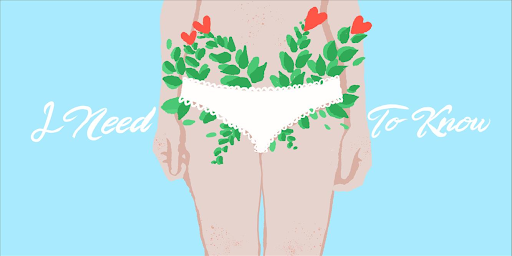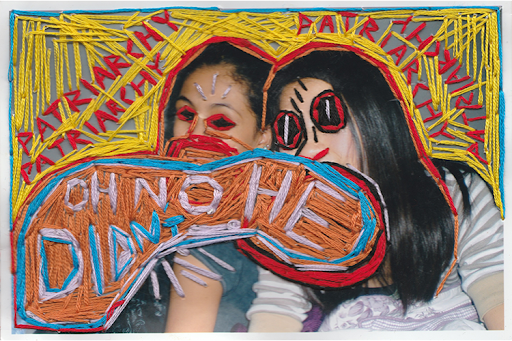Redefining Beauty: Embracing Diversity In Genital Appearance
- Genitals should be accepted for their diverse characters.
- Long and thick penises should not be the idea, neither should pink, smooth vaginas be.
- Genital shame is culturally nurtured and is further enhanced by the media we consume.
The media consumed by us has reinforced the idea that your genitals should look a certain way. Furthermore, society strengthens the image of ideal genitals by setting up certain norms about how the vulvas should be pink, hairless and penises should be thick and long. The association of our genitals with the idea of ugliness, pleasure etc further leads to individuals viewing their bodies in a mechanistic way. This leads to the idea that our bodies should be changed according to the ideal standards set by society.

HAVE YOU BEEN SHAMED FOR THE WAY YOUR GENITALS LOOK?
Throughout history, people have been shamed for the way their genitals look. In earlier times, genital shaming resulted in the sexual exploitation of the minority and slaves.
Saartjie Baartman was enslaved and put on exhibit for the way her genitals looked, labelling them as abnormal as per societal standards. According to BBC, Saartjie, had “steatopygia”, resulting in “extremely protuberant buttocks due to a build-up of fat. These made her a cause of fascination when she was exhibited at a venue in London’s Piccadilly Circus after her arrival”. Being subjected to such acts shows the mockery society subjects people to, over the image of their genitals.
You must have witnessed teenagers in school giggling or bragging about the size of their penises, often putting to shame the ones who didn’t fit the standard. Genital shaming of this kind fills the individual with a sense of insecurity about the size and pleasure-providing ability of their penises.
After pregnancy, women are often asked to get an extra stitch after C section to enhance the sexual pleasure of their partners. The stitch put in place to tighten the vaginal opening is another act that serves the ideal defined by the society. This further leads to women feeling ashamed of their genitals. The idea of being “too loose for pleasure” is a socially nurtured idea of genital shame.
Similarly, the media has portrayed a certain image of vaginas. This image of the “ideal” defines the sight of the vagina as something pink and rosy with no smell or wrinkles. In reality, our genitals are unique in shape, size, and colour and the differences are normal. Vaginas don’t have to be tight and penises don’t have to be long for pleasure.
READ THE RIGHT BOOK- CHANGING THE CONTENT THAT WE CONSUME
Genital shaming amongst peers begins from a fairly young age. This necessitates a change in the type of image that we consume of our genitals. The porn industry has set certain standards where all the consumers can see are fit bodies with long penises and pink vaginas with smooth folds.
However, it’s crucial to know that this isn’t how normal human genitals look like. The consumption of the idealized imagery of the body impacts our self-esteem and image of our body.
Medical practices also act as ways through which the image of “ideal” is promoted. With procedures like labiaplasty, the idea of a tight and ideal vagina is created. Women are encouraged to go through such procedures by their partners or family to enhance their sexual satisfaction. Hence you must consume content that enhances your self-worth and makes you comfortable with your genitals.

HOW TO DEAL WITH GENITAL SHAMING?
One can deal with genital shaming when we are aware of the genital anatomy. Knowing our bodies is crucial to having a comfortable image of them.
- Knowing about your genitals and the biological terms for the parts of them is one step to dealing with the genital shame your mind puts you through.
- Once you gain a better understanding of the function of various parts and the labels, acceptance will come along with it.
- Teaching your peers about genitals and talking to them about the idea of acceptance of differences further creates an environment wherein you are comfortable about your sexual health.
- Learning techniques to provide yourself with pleasure and exploring what works out for you is also a way which make an individual more comfortable with their genitals and the pleasure aspect of it.
- Spend some time with your genitals and look at them, explore them to create a more intimate relationship with yourself.
- Shower yourself with daily affirmations expressing how grateful you are for the pleasure your genitals provide you with.
- If you have a partner, engaging in activities which generate comfort around the genitals helps couples strengthen the pleasure they derive from intercourse. Hearing appreciation from your partner about your genitals fills you with confidence.
- If someone shames you for having hairy genitals or not having them in the ideal form, respond to them and stand for yourself.
CONCLUDING THOUGHTS
Be gentle with yourself and learn how to be compassionate and kind towards your own body. Unlearning the genital shame endowed upon you culturally or through media isn’t an easy process. However, the right acts, right words and right people can help you be more comfortable with your genitals.
Author

